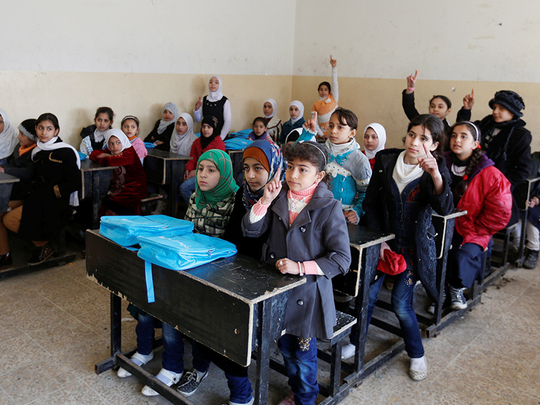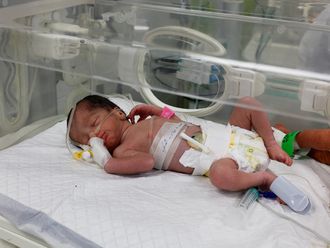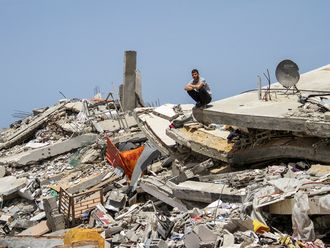
Mosul: Three quarters of a million civilians living in west Mosul are at “extreme risk”, the United Nations warned on Tuesday as Iraqi forces prepared for a push into the Daesh bastion.
A hundred days into a massive offensive to retake Daesh’s last major stronghold in Iraq, federal forces and the terrorists took up positions on either side of the Tigris River that divides Mosul.
The three months it took to reconquer Mosul’s east saw some tough fighting but even deadlier battles are expected on the city’s west bank, which is home to the narrow streets of the Old City and some of Daesh’s traditional redoubts.
“We hope that everything is done to protect the hundreds of thousands of people who are across the river in the west,” the United Nations’ humanitarian coordinator for Iraq Lise Grande said in a statement.
“We know that they are at extreme risk and we fear for their lives.”
Iraqi forces have retaken all central neighbourhoods in east Mosul and on Tuesday were clearing Rashidiyah, which lies on the northern edge of the city and is the east bank’s last area still to be secured.
Tens of thousands of other forces are deployed north, south and west of Mosul, meaning that the terrorists are trapped in the city where their leader Abu Bakr Al Baghdadi proclaimed his “caliphate” in 2014.
Residents of west Mosul and civil activists said on Monday that Daesh fighters had forced civilians along the river front to leave their shops and homes.
“The group forced us to leave our homes ... without allowing us to take our belongings,” a resident of Al Maidan said. “It deployed gun positions and posted snipers on roofs and at windows.”
Facing them across the river are some of Iraq’s most seasoned elite forces, whose engineers some reports said were already working on assembling pontoon bridges for a cross-river assault.
All bridges across the Tigris in Mosul were either bombed by Daesh or hit by air strikes carried out by the US-led coalition that has helped Iraq reclaim about two thirds of the territory it lost to Daesh in 2014.
“The Iraqi forces have over the course of their battle against Daesh in this country developed the capability to do bridging, including bridging while under fire,” coalition spokesman Colonel John Dorrian said.
The UN had feared an exodus of unprecedented proportions before the Mosul offensive began on October 17 but while 180,000 people did flee their homes, the majority stayed.
It now estimates that 750,000 people still live in Mosul’s west bank, either because they did not want to leave their homes or were prevented from doing so by Daesh, which has routinely used civilians as human shields in this conflict.
“We don’t know what will happen in western Mosul but we cannot rule out the possibility of siege-like conditions or a mass exodus,” Grande said in the statement.
Meanwhile, thousands of Iraqi children are heading back to school in east Mosul, the UN children’s fund Unicef said on Tuesday.
But while returning to school is a good start, recovery will likely be a long process for Iraqi children exposed to bloody urban warfare that followed Daesh efforts to indoctrinate the next generation.
“As fighting subsides in east Mosul, 30 schools reopened on Sunday with help from Unicef, allowing over 16,000 children to resume their education,” it said in a statement.
“Some schools in the area were closed for up to two years, and girls were banned from getting an education,” it said.
“After the nightmare of the past two years, this is a pivotal moment for the children of Mosul to reclaim their education and their hope for a better future,” Unicef’s Iraq representative Peter Hawkins said.












